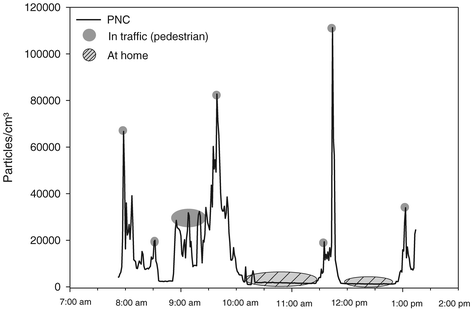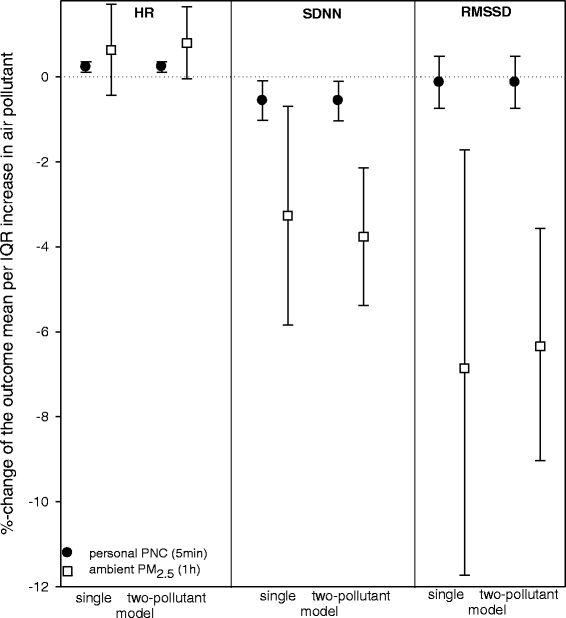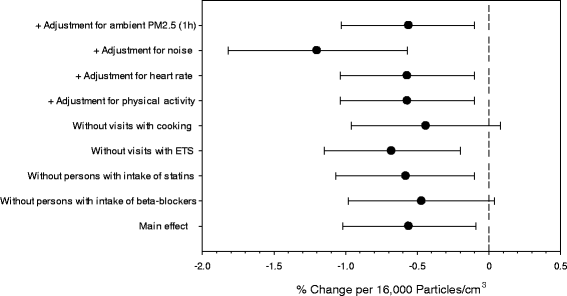Elevated particle number concentrations induce immediate changes in heart rate variability: a panel study in individuals with impaired glucose metabolism or diabetes
- PMID: 25888845
- PMCID: PMC4379544
- DOI: 10.1186/s12989-015-0083-7
Elevated particle number concentrations induce immediate changes in heart rate variability: a panel study in individuals with impaired glucose metabolism or diabetes
Abstract
Background: The health effects of short-term exposure to ambient ultrafine particles in micro-environments are still under investigation.
Methods: Sixty-four individuals with type 2 diabetes and impaired glucose tolerance recorded ambulatory electrocardiograms over five to six hours on 191 occasions in a panel study in Augsburg, Germany. Personal exposure to particle number concentrations (PNC) was monitored for each individual on 5-minute basis concurrently and particulate matter with an aerodynamic diameter<2.5 μm (PM2.5) was acquired from a central monitoring site on an hourly basis.
Results: More than 11,000 5-minute intervals were available for heart rate and measures of heart rate variability including SDNN (standard deviation of NN intervals). A concurrent decrease in 5-minute SDNN of -0.56% (95% confidence limits (CI): -1.02%; -0.09%) and a 5-minute delayed increase in heart rate of 0.23 % (95% CI: 0.11%; 0.36%) was observed with an increase in personal PNC of 16,000 per cm3 in additive mixed models. Models evaluating the association of concurrent 5-minute personal PNC and of 1-hour PM2.5 showed independent effects on SDNN.
Conclusion: The data suggest that freshly emitted ultrafine particles and aged fine particulate matter are both associated with changes in cardiac function in individuals with type 2 diabetes and impaired glucose tolerance in urban areas.
Figures




References
Publication types
MeSH terms
Substances
LinkOut - more resources
Full Text Sources
Other Literature Sources
Medical

